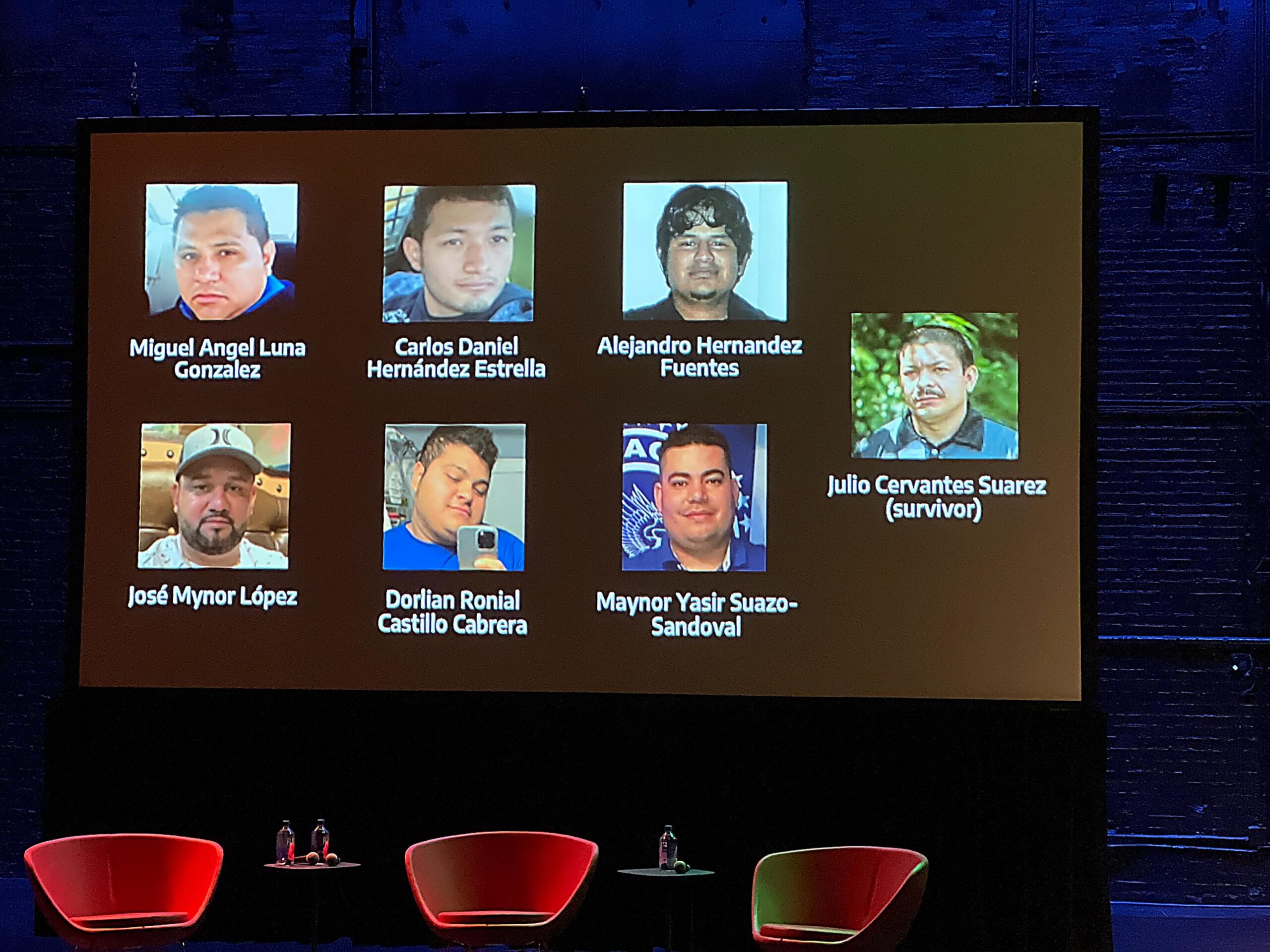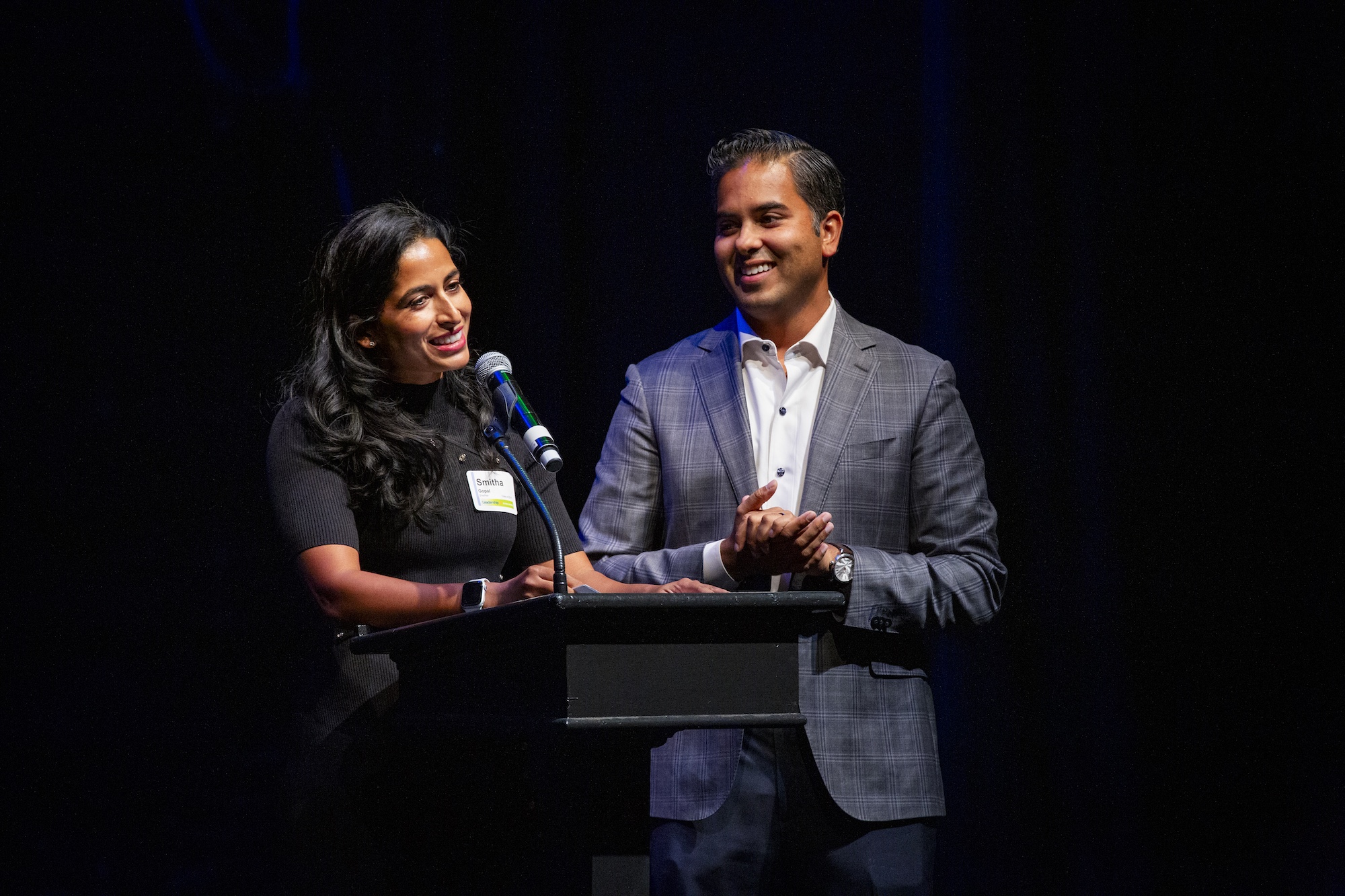Some events unify a city, enabling even strangers to cut across lines of difference and unfamiliarity. The Key Bridge collapse did that for Baltimore.
That solidarity was palpable at the start of a recent convening, held in late October by the civic impact development program The Leadership, for participants to “Reconnect” and explore leadership during crisis.
After more than 230 program alumni, prospective applicants and other stakeholders filed into Baltimore Center Stage, Leadership Board Chair Robert Matthews grounded the room with a moment of silence for the six lives lost and one survivor of the tragedy (all immigrants), which destroyed a major commercial transit route and cast a shadow over the region.
The seven faces stayed on screen as the theater became still for a moment.
When the cargo ship Dali hit the Francis Scott Key Bridge on March 26, it did so with the force of 66 heavy trucks traveling at highway speed, leaving crews working on the structure little time to escape. The infrastructure disaster shut down the Port of Baltimore, putting 8,000 people out of work and affecting nearly 140,000 jobs in the region.
“We decided to focus on the immediate response and recovery with a focus on the united command, and the unprecedented technical and coordinational challenges that we saw,” said Matthews as he introduced the evening’s topic. “We’re excited to celebrate and recognize that.”

The organization’s executive director David Sachs was later joined on stage by Shaina Hernandez, deputy chief of staff for Gov. Wes Moore, and Rear Admiral Shannon Gilreath of the US Coast Guard. He asked the government leaders to describe how they remembered the early moments of the collapse.
Later, several attendees would comment that this moment felt like a scene from a movie, as the room fell silent and all eyes locked onto the speakers. The weight of their memories and the intensity of Sachs’ questions created a powerful, almost cinematic atmosphere that immediately drew everyone in, setting the tone for the rest of the discussion.
Hernandez and Gilreath shared challenges in communication and coordination amid the swirling uncertainty. They continued into a discussion of how these hurdles were cleared and what they ultimately learned from the experience. Scroll down for some takeaways.
Build trust
Both Hernandez and Gilreath pressed the importance of trusting in the relationships formed to solve the crisis. Ideally, trust is established early and ready to go when it’s needed, but things rarely go that way.
“It was a lot of trusting the military folks that we were working with, trusting our partners in the county. There were so many different work streams and so many different people involved,” Hernandez said. “And so it was a lot of over-communicating and really making sure that you… have that relationship with someone, that they knew that when you said something, you were going to do it.”
Measure progress one step at a time
It’s hard to make plans when the landscape is complex and constantly shifting — quite literally, since each removal of wreckage would shift the structure and stability below.
You stay unified in your message, you stay unified in those facts. You work those out before you get to the public-facing announcement.
Rear Admiral Shannon Gilreath, US Coast Guard
Gilreath referenced his team’s philosophy of celebrating “milestones instead of mile ones,” or using shorter-term benchmarks to move forward when long-term planning and coordination was difficult.
Teams were often forced to overhaul strategies almost daily when wreckage would rearrange itself or settle, he said. At the same time, public pressure compelled a push for details, specificity and certainty — much of which came from Hernandez and her team. Because Gilreath’s crew earned enough trust from Hernandez and other stakeholders, they were able to communicate problems, adapt quickly, lean on each others’ capabilities and cultivate communal resilience.
Necessity of effective communication
Panelists said involved parties established critical coordination of responses through a unified command — a physical workspace where communication teams from various departments and agencies could all work side-by-side. This cut down coordination time and encouraged relationship-building between members of different departments.
“You stay unified in your message, you stay unified in those facts,” Gilreath said. “You work those out before you get to the public-facing announcement … and you stay together.”
Locals’ support grounded recovery efforts
Gilreath’s experiences with search-and-rescue efforts in New Orleans after Hurricane Katrina, as well as the Deepwater Horizon spill recovery in the Gulf of Mexico, made him extra appreciative of the support that response personnel receive from local residents after a disaster. It does a lot for the morale of first responders when the local community shows up for them.
While working on Key Bridge recovery efforts, people would walk up to the first responders, offer snacks, let them pet dogs and offer additional support and encouragement. It made a difference, Gilreath said.
“There were long, tough days, and it was important to remember why we were there,” he said. “The people of Baltimore and the state of Maryland made a difference in this response.”
The power of a collective
The Greater Baltimore Committee created The Leadership in 1983 to build connections among influential individuals throughout the region’s professional sectors. As part of this work, the organization has created several cohorts of leaders in various industries. Two of those prior groups’ members, EcoMap Technologies COO Smitha Gopal and Truist regional market president Jay Turakhia, now serve on The Leadership’s board and acted as event hosts.

The event sought to surface lessons and foster connections across the layers of the city’s leadership — ensuring that Hernandez and Gilreath’s insights wouldn’t dissolve into abstraction, but instead become part of Baltimore’s civic life through the listeners in that room.
This gathering wasn’t just about telling stories, though: It aimed to build a culture of adaptability and resilience that would extend throughout our entrepreneurial and civic communities.
Those things will continue to matter a lot over the next four years — the time the Maryland Department of Transportation says the bridge’s reconstruction will likely take.







